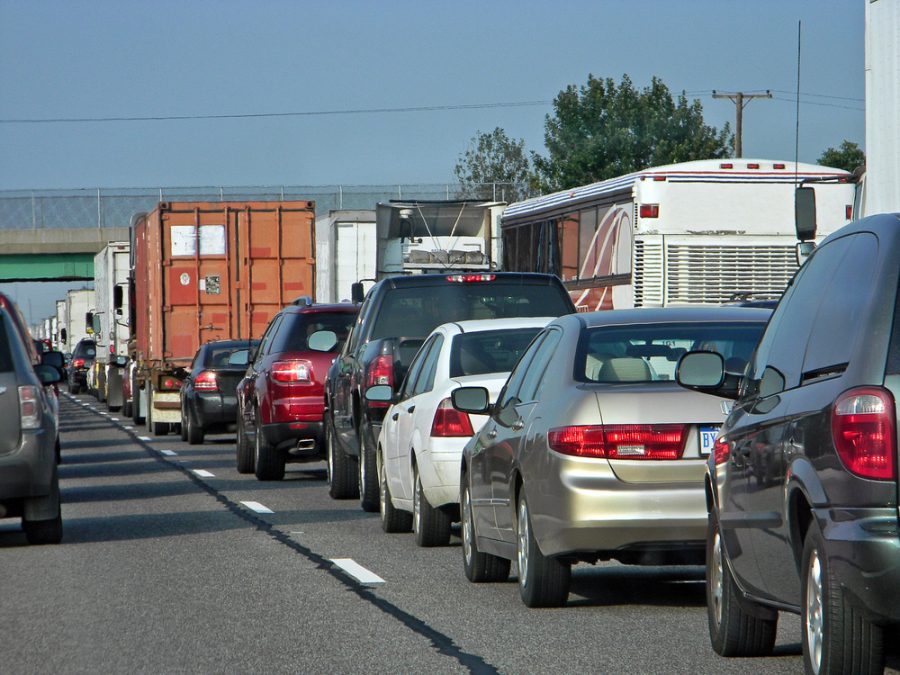Introduction
As a truck driver, you need to know the big difference in stopping distances between semis and passenger vehicles. Fully loaded commercial trucks with air brakes need more distance to stop than passenger cars with hydraulic brakes, especially at highway speeds. Weight of the truck, braking system, road conditions, and weather can all play a factor in stopping distance so you need to maintain a safe following distance to avoid accidents.
Federal regulations by NHTSA and other bodies emphasize the importance of awareness and compliance with these safety standards so truck drivers can navigate the complexities of interstate trucking. By knowing your truck’s braking capabilities and the environmental factors that affect stopping distance you are contributing to the safety of all road users and reducing the risk of truck accidents and overall highway traffic safety.

The Problem: Stopping Distance Gap
Understanding stopping distance is key to road safety especially when comparing the braking of semi’s and passenger vehicles. Passenger cars can stop from 65 mph in about 300 feet under ideal conditions. Semi’s especially when fully loaded can stop in about 600 feet – so you need a bigger following distance when driving near large commercial trucks. This gap is due to various factors – weight of the vehicle, type of brakes (air brakes in trucks vs hydraulic brakes in cars), and environmental conditions which all play a big role in truck stopping distance. The faster the vehicle the harder it is to stop which is why speeding is so dangerous with semis. This resource goes into more detail about those risks.
Truck drivers especially need to be aware of “white line fever” or highway hypnosis, a condition that happens when you’re on the road for hours and you become less alert and your reaction time slows down thus increasing the stopping distance. All drivers but especially those driving large trucks need to be aware of these differences and the increased stopping distance due to fatigue, bad weather, and road conditions. As a driver, you can combat this by keeping your eyes moving. Change the focus of your gaze by distance and from side to side regularly to stay alert on the road. By understanding and respecting these stopping distance variations truck drivers and other road users can reduce truck accidents and overall highway traffic safety.
Why does it matter?
Stopping distance is key to understanding road dynamics especially when comparing passenger vehicles and semi’s. The more mass of a vehicle the more force it takes to change its state of motion including stopping. That’s why a fully loaded commercial truck with its massive weight needs more distance to stop than a passenger car. For example, a passenger car may need about 300 feet to stop at 65 mph while a semi may need about 600 feet – almost the length of two football fields. That’s why there are so many regulations on truck weight and frequency of weigh stations. Check out our blog on weigh stations to learn more about those regulations.
This difference in stopping distance is not just numbers; it has real-world implications for road safety. When drivers of smaller vehicles don’t account for the longer stopping distance of a semi they risk rear-end collisions especially if they follow too close. The risk is higher when the truck driver is less alert or has a slower reaction time due to “white line fever” a common problem among truck drivers who are on the road for hours. This state of fatigue can delay the truck driver’s response to brake and increase the stopping distance even more.
So all drivers especially those in passenger vehicles need to understand and respect these differences in stopping distance. A safe following distance and awareness of the longer stopping distance of large trucks are key to road safety. This awareness can prevent accidents and ensure all road users whether in a semi or passenger car can travel safely and efficiently. Recognizing and adapting to these stopping distance variations is part of sharing the road with large commercial vehicles.

The Truck Driver
Truck drivers are key to road safety, especially by managing the longer stopping distance of semis compared to passenger vehicles. Ensuring proper following distance is critical to prevent rear-end collisions given the longer braking distance of fully loaded commercial trucks. Driver reaction time, speed and road conditions affect stopping distance so truck drivers need to be more alert.
The braking system difference between semi’s which use air brakes and most passenger vehicles with hydraulic brakes contributes to the variation in stopping distance. Air brakes have a lag time before fully engaging thus lengthening the stopping distance, especially at high speeds or under heavy loads. Knowing this is important for all drivers to maintain safe following distance and reduce accidents.
To combat fatigue and stay alert truck drivers can use strategies like taking regular breaks, fresh air circulation, and adjusting their environment for optimal alertness. These along with knowing the factors that affect a truck’s stopping distance are key to road safety for truck drivers and the motorists sharing the road with them.

Air Brakes vs. Hydraulic Brakes and Maintenance
While both air brakes and hydraulic brakes stop a vehicle, their mechanism and function are different. Hydraulic brakes found in passenger cars have an enclosed fluid system. Pressing the brake pedal directly translates to pressure on the brake pads and has a quicker response time. Air brakes found in heavy-duty vehicles use compressed air to engage the brakes. This creates a slight delay or air lag between pressing the pedal and the brakes applying which can increase the stopping distance. This is important to consider on the road as even a split second can make a difference in reaction time and safety. This is also why speeding is so dangerous in or around semi-trucks.
Regular truck maintenance is key to safe driving especially when it comes to brakes. Brake checks and replacements should be done regularly to prevent malfunction and accidents. Proper maintenance also helps combat “white line fever” a state of fatigue and reduced alertness that can affect long-haul drivers. By prioritizing maintenance drivers can address potential issues and contribute to a safer driving experience for themselves and others on the road.
Sharing the Road Safely
When sharing the road with large trucks be aware of their blind spots which are usually found along the sides and rear of the truck. Because of the truck’s size and mirror configuration, these areas are not visible to the truck driver so avoid lingering in these zones to prevent accidents. Knowing that trucks have longer stopping distances because of their weight and air brake system is important for safety. Keep at least 4 times the usual following distance you would for cars to have enough reaction time if the truck stops suddenly.
Knowing “white line fever” can also help in road safety. This condition can affect a driver’s judgment and reaction time so other road users should practice defensive driving and be extra cautious around large trucks. By knowing these and adjusting your driving habits you can contribute to a safer road for all. Our blog on sharing the road with semi trucks has more.

Regulations and Resources
The National Highway Traffic Safety Administration (NHTSA) is key to interstate trucking safety by setting and enforcing rules that address the stopping limitations of different size and weight class trucks. They also address driver alertness by implementing rules on driving hours and mandatory rest to prevent fatigue-related issues like “white line fever”. Compliance with NHTSA rules is important for both truck and passenger vehicle drivers to promote road safety.
Knowing and following NHTSA rules including those for stopping distance and driver alertness can reduce risks on the road. Drivers should practice safe driving habits like maintaining enough following distance and being aware of truck blind spots to contribute to a safer driving environment for everyone.

Conclusion
Sharing the road with large trucks requires understanding and respect for their unique characteristics, especially their stopping distance. Because of their size and weight trucks need more space to stop completely compared to passenger vehicles. By knowing this limitation all road users can adjust their driving habits.
Remember road safety is a shared responsibility. Truck drivers can maintain their vehicles, follow rules, and rest periods to combat fatigue. Passenger vehicle drivers can practice defensive driving, maintain safe following distance, wear seatbelts, and avoid truck blind spots. Let’s all do our part and practice safe driving to have a more harmonious and accident-free driving experience for everyone.

